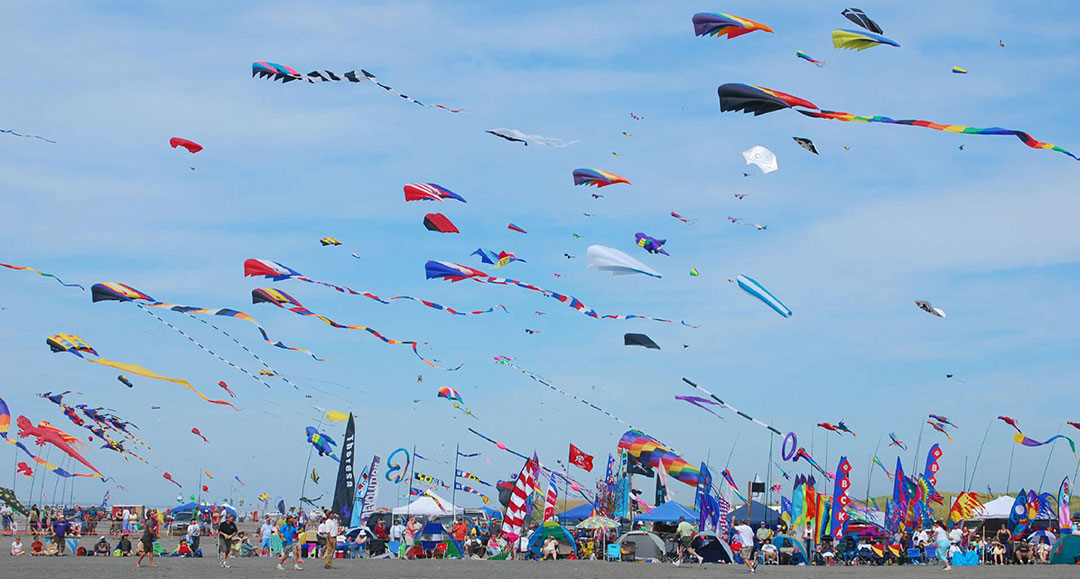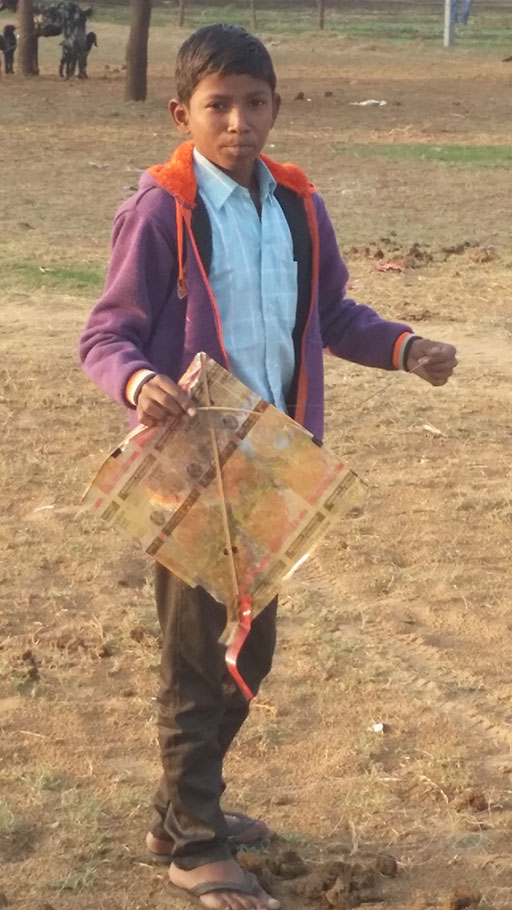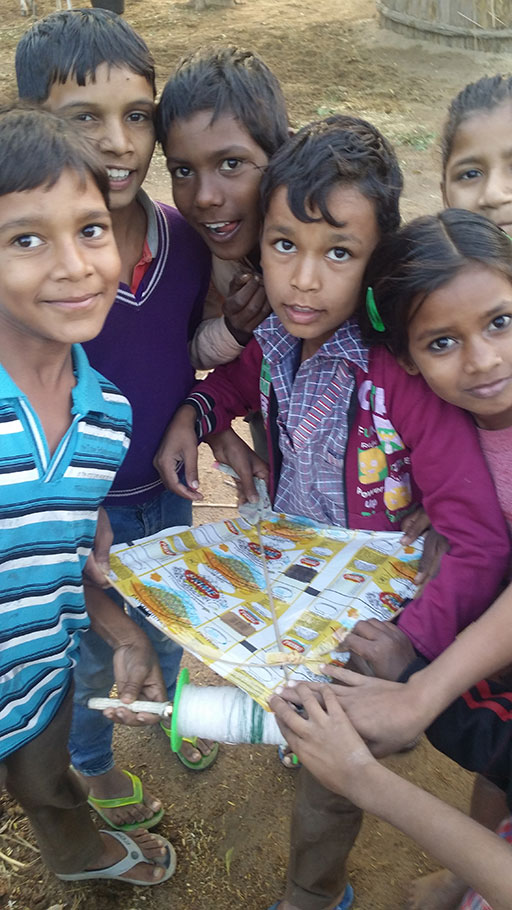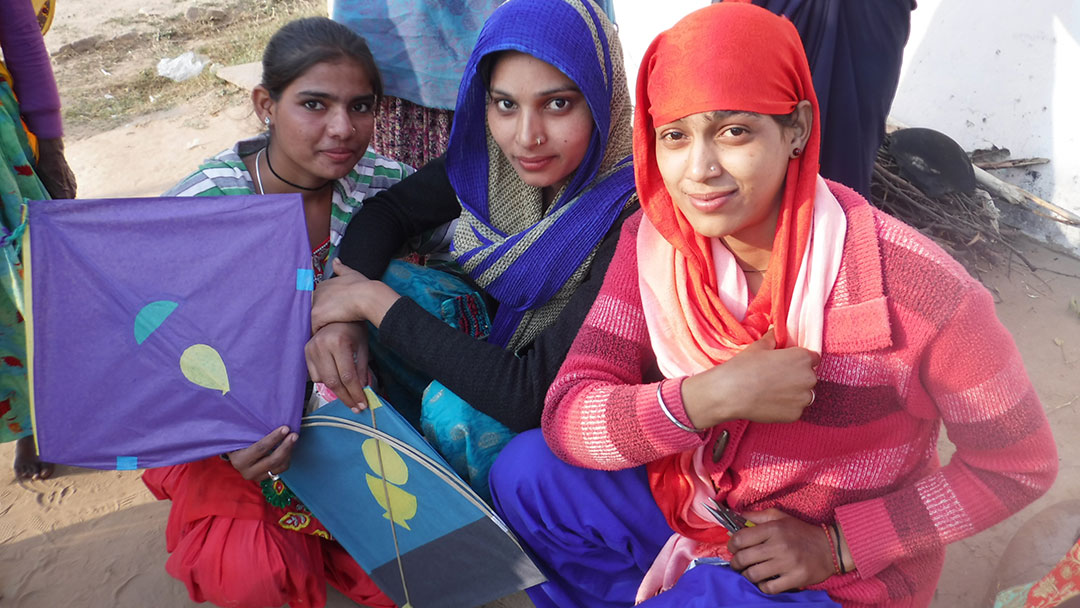
Key points
- People of all ages in Jaipur share a passion and historical connection for flying kites
- Kite flying is enjoyed all year round but reaches its peak with the festival day of Makar Sankranti festival and the three-day International Kite Flying Festival
- Visitors to Ikaki Bagh can enjoy the love of kites and kite-making skills in our rural Indian setting
The love of kites in Rajasthan can be traced to the Mogul period. Kites appear quite commonly in miniature paintings from the period. One popular theme was of a young suitor skilful in the art of kite flying. He would land his message of affection to his waiting love on a rooftop by skilful kite flying.
Kites are popular all year, particularly among children and families.


The Makara Sankranti Festival – welcoming Spring
The Makara Sankranti Festival is one of India’s most auspicious festivals. It is celebrating widely across India. The day marks the arrival of Spring and falls on 14 January each year.
The festival day is filled with rituals and celebrations.
In Jaipur, people visit the holy Hindu site of Sita Ram Ji temple about 10 km outside the city. This spectacular site is made up of a series of temples built either side of a low mountain valley.
The main temple of the site is Galtaji. Built in pink stone, the temple features beautiful pavilions with rounded roofs, carved pillars and painted walls. Galtaji historically was an important site for Hindi ascetics who practiced meditation and did penance.
A large natural spring high at the end of the valley flows downwards filling a series of seven water tanks.
Visitors and pilgrims follow a gentle climb. They offer prayers at various temples before coming to the water tanks to bathe.
People can then walk past the last of the pools before taking steps to a hilltop temple. A fine view of the whole temple complex and Jaipur City and its fortifications is available from this point.
The Sita Ram Ji temple complex in this area is also commonly known as the Monkey temple due to large colony of playful and, at times, naughty monkeys in the area.
Visitors might also enjoy the tranquillity and beauty of the nearby Sisodia Rani Garden and Palace. The site is a combination of tiered gardens, beautifully painted pavilions depicting scenes from the life of Lord Krishna, watercourses and a two-storeyed palace. It was built in 1728 by the great Hindu Rajput ruler and founder of Jaipur, Jai Singh II.
Kite celebrations
Kite flying is the centrepiece of celebrations of the Makara Sankranti Festival. Jaipur’s bazaars are crammed with colourful kites of all shapes and sizes.
Families typically gather on their rooves and terraces from dawn for a day of kite flying. Friends and relatives drop in during the day. It is customary guests are offered sweets they have prepared the day before, like til ke ladoo.
This sweet is like a sesame brittle made with sesame seed, jaggery and ghee.
Celebrations continue through the evening with traditional kite flying replaced by ‘lantern kites’. Lantern kites are becoming more and more popular every year. They rely on an open flame to rise and spectacularly light up the night sky.

Jaipur International Kite Festival
This immensely popular festival runs for three days, starting on 14 January. It is inaugurated at the huge Jaipur Polo Ground in the centre of the city.
The festival involves two main sections. The Friendly Kite Flying section are for people of all ages to rejoice in the day. Kites of every colour imaginable take to the sky in a spectacular display.
By contrast, the second section is the Kite War and is serious business. Here kite flyers try and disable an opponent’s kite in mid-air battle. The flyer relies on line tension for control and an abrasive line of string or line to cut down the line of rival’s kites.
The Kite War Competition is fierce and spectacular. The festival culminates on the last day with more celebrations and prize distribution.
Kites and Ikaki Bagh
Tours to Ikaki Bagh include extended time visiting the local Jhinjha Village to sample an experience of rural Indian life, the ‘real India’.
Visitors are likely to encounter local village children playing with their home-made kites. These kites are modest by comparison to the ones sold in Jaipur’s bazaars. However, for their simplicity they are also superbly and inventively made. Materials used are mostly discarded paper, cloth, string and simple wooden frames.
The village children enjoy kite flying every bit as much as their big city counterparts. Seeing their passion and skill is a heart-warming experience for visitors.

